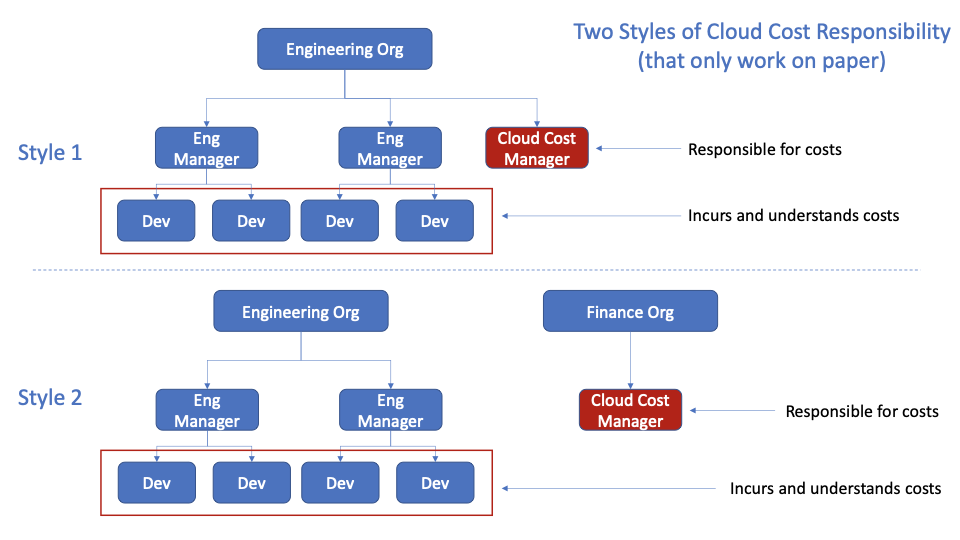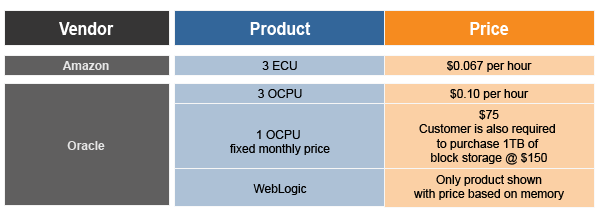In today’s digital age, cloud computing has become an integral part of businesses, government organizations, and individuals. Cloud computing has revolutionized the way data is stored and accessed, making it more efficient and cost-effective. However, with the increasing reliance on cloud services, comes the need for businesses to understand the intricacies of cloud cost models.
A cloud cost model is a pricing model used by cloud service providers to charge their customers for the use of cloud services. It is a critical aspect of cloud computing as it directly affects the cost of using cloud services. Understanding the different cloud cost models available can help businesses make informed decisions about which cloud service provider to choose and how to optimize their use of cloud services. In this article, we will explore the different types of cloud cost models and provide insights into how businesses can effectively manage their cloud costs.
Cloud Cost Model is a pricing structure used by cloud service providers to determine the cost of their services. It relies on a combination of factors such as usage, resource utilization, and number of users. The model helps customers to choose the right services for their needs, while ensuring that providers are compensated for their services.
The most common cloud cost models are pay-as-you-go, subscription-based, and flat-fee. Pay-as-you-go allows customers to pay for resources as they use them. Subscription-based models require customers to pay for a certain amount of resources at the start of their subscription. Flat-fee models require customers to pay a fixed fee for a certain amount of resources.
When selecting a cloud cost model, it is important to consider the size and scope of your project. Factors such as the number of users, usage requirements, and resource utilization should all be taken into consideration. It is also important to consider the pricing structure and support offered by the cloud service provider.

What is Cloud Cost Model?
Cloud cost models are an effective way of understanding and predicting the cost of cloud computing. They provide a structured approach to calculating the price of cloud services and are used by businesses to decide which cloud provider to use. With a cost model, businesses can make informed decisions on how best to use cloud services to reduce costs and increase efficiency.
The cost of cloud computing is determined by a variety of factors, such as the type of services used, the amount of storage used, the type of data stored, and the amount of time needed to complete a task. A cloud cost model helps businesses understand and predict the cost of cloud services, enabling them to make the best decisions for their business needs.
Types of Cloud Cost Models
There are several types of cloud cost models, including: pay-as-you-go, subscription-based, and hybrid models. Pay-as-you-go models charge customers for the amount of storage and computing resources they use. Subscription-based models charge customers a flat monthly or annual fee for access to cloud services. Hybrid models combine the two and offer customers the flexibility to use different types of cloud services.
Pay-as-you-go models are popular among businesses because they are the most cost-effective. They offer businesses the flexibility to use the cloud services they need, when they need them, without having to commit to a long-term contract. Subscription-based models are beneficial for businesses that need a steady, predictable level of cloud services. Hybrid models are a great option for businesses that need to use multiple types of cloud services.
Advantages of Cloud Cost Models
Cloud cost models offer businesses several advantages, including: cost savings, scalability, and flexibility. Cost savings are achieved by using cloud services that are more cost-effective than traditional IT solutions. Scalability allows businesses to scale up or down as needed, without having to invest in additional hardware. Flexibility allows businesses to use different types of cloud services to meet their specific needs.
Cloud cost models also offer businesses the ability to monitor and control their cloud costs. This allows businesses to ensure that they are getting the best value for their money and to make adjustments if needed. Cloud cost models also provide businesses with insights into usage trends, allowing them to make informed decisions on how best to use cloud services.
How to Choose a Cloud Cost Model
When choosing a cloud cost model, businesses should consider their budget, usage patterns, and current IT infrastructure. Businesses should also evaluate the features and services offered by different cloud providers. It is also important to consider the security of the cloud provider and the support they offer.
Businesses should also consider their future needs and how the cloud cost model can be adapted over time to accommodate them. They should also look for cloud providers that offer the flexibility to switch from one cost model to another, as needed. Finally, businesses should assess the customer service offered by the cloud provider to ensure that they can get the support they need.
Conclusion
Cloud cost models are an effective way of understanding and predicting the cost of cloud computing. They offer businesses several advantages, such as cost savings, scalability, and flexibility. When choosing a cloud cost model, businesses should consider their budget, usage patterns, and current IT infrastructure, as well as the features and services offered by different cloud providers. With the right cost model, businesses can make informed decisions on how best to use cloud services to reduce costs and increase efficiency.
Frequently Asked Questions
Cloud cost models can be a confusing concept to understand. This FAQ provides basic information about cloud cost models to help you make an informed decision.
What is cloud cost model?
A cloud cost model is a method used to determine the cost of using cloud services. This includes the cost of hardware, software, and services used in the cloud. A cloud cost model helps organizations determine the most cost-effective way to use cloud services. It also helps to identify any potential savings that can be made by using cloud services instead of traditional on-premise infrastructure.
The cloud cost model can be broken down into two main components: operational costs and capital costs. Operational costs are the costs associated with the day-to-day running of the cloud services, such as the cost of storage and compute resources. Capital costs are the costs associated with setting up and maintaining the cloud infrastructure, such as the cost of hardware and software licenses.
How is cloud cost model different?
Cloud cost models differ from traditional on-premise cost models in several ways. First, cloud cost models are more flexible and can be adapted to fit the changing needs of an organization. This means that organizations can quickly and easily adjust their cloud costs to meet their budget and needs.
Another difference is that cloud cost models are more cost-effective. As the cost of on-premise infrastructure increases, the cost of cloud services decreases. This means that organizations can save money by using cloud services instead of on-premise infrastructure.
What are the benefits of using a cloud cost model?
There are several benefits to using a cloud cost model. First, it allows organizations to accurately estimate the cost of their cloud services. This helps organizations to make informed decisions about their cloud investments.
Second, it helps organizations to identify any potential savings that can be made by using cloud services. This can help organizations to optimize their cloud investments and ensure they are getting the most out of their cloud services.
Finally, cloud cost models can be used to track and monitor the cost of cloud services over time. This can help organizations to identify any areas where they can reduce costs or increase efficiency.
What are the different types of cloud cost models?
There are several different types of cloud cost models. The most common type is the pay-as-you-go model, where users pay for only the resources they use. This model is often used for short-term projects and is a great way to save money when using cloud services.
Another type of cloud cost model is the subscription model. This model is often used for longer-term projects, as it allows users to pay a fixed monthly fee for a certain amount of resources.
Finally, there is the reserved model, which is often used for projects that require a large amount of resources over a long period of time. This model allows users to pay a lump sum upfront and receive discounted rates for their cloud services.
What are the considerations when choosing a cloud cost model?
When choosing a cloud cost model, there are several factors to consider. First, it is important to understand the needs of the organization and the type of project that will be using the cloud services. This will help to determine which type of model is the most cost-effective.
Second, it is important to understand the cost of the various cloud services that are available. This will help to determine which services are the most cost-effective for the organization.
Finally, it is important to understand the potential savings that can be made by using cloud services instead of on-premise infrastructure. This will help organizations to optimize their cloud investments and ensure they are getting the most out of their cloud services.

In conclusion, the cloud cost model is a crucial factor to consider when moving towards the cloud. It allows businesses to effectively manage and optimize their cloud costs, ensuring that they are only paying for what they need and nothing more. By understanding the different cloud cost models available and choosing the right one for your business, you can make the most out of your cloud investment.
As more and more businesses move towards the cloud, it’s important to keep in mind that cloud cost models are not one size fits all. Each business has its unique needs and requirements, and the cloud cost model that works for one may not work for another. Therefore, it’s important to work with a trusted cloud provider who can help you analyze your business needs and provide you with the right cloud cost model that suits your specific requirements. With the right cloud cost model in place, businesses can enjoy the many benefits of the cloud without worrying about overspending or inefficiencies.


